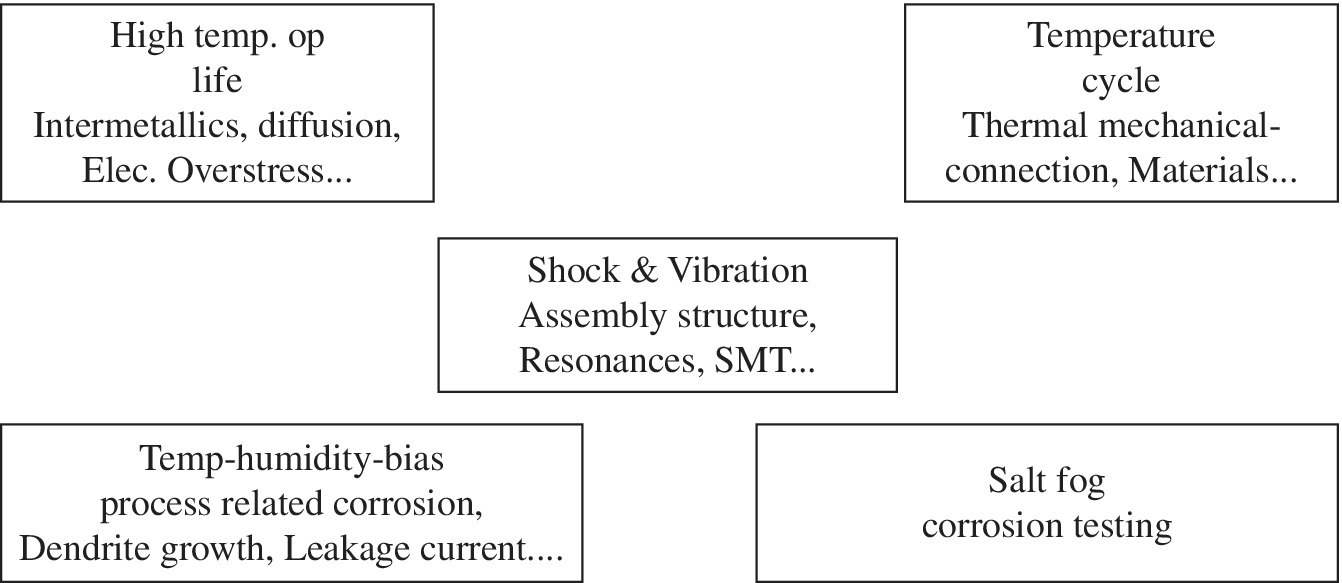Special Topics B: Applications to Accelerated Testing
B.1 Introduction
In this section we provide some examples of how to use the acceleration models detailed in Chapter 4 and elsewhere in this book.
Accelerated testing is the cornerstone of reliability testing by companies all over the world. There are a number of reliability conferences where the majority of the papers pertain to the subject of accelerated testing done on products in industry. The reader is referred to two of the most popular conferences called Accelerated Stress Testing and Reliability (ASTR) conference and Reliability and Maintainability Symposium (RAMS). In many industries, “Failure is not an Option”; this is in fact a slogan often coined by NASA. It fact NASA engineers make up the largest group of attendees at these conference every year. In terms of thermodynamic reliability, entropy damage in systems is a big concern and what better way to look for potential entropy problems than by doing accelerated testing. Tests are typically divided up into five main categories related to the popular stresses used in industry: high temperature; thermal cycle; temperature–humidity; salt fog; and shock and vibrations corrosion testing. These tests are exemplified in Figure B.1.

Figure B.1 Main accelerated stresses and associated common failure issues
We note that high-temperature accelerated testing is often used ...
Get Thermodynamic Degradation Science now with the O’Reilly learning platform.
O’Reilly members experience books, live events, courses curated by job role, and more from O’Reilly and nearly 200 top publishers.

